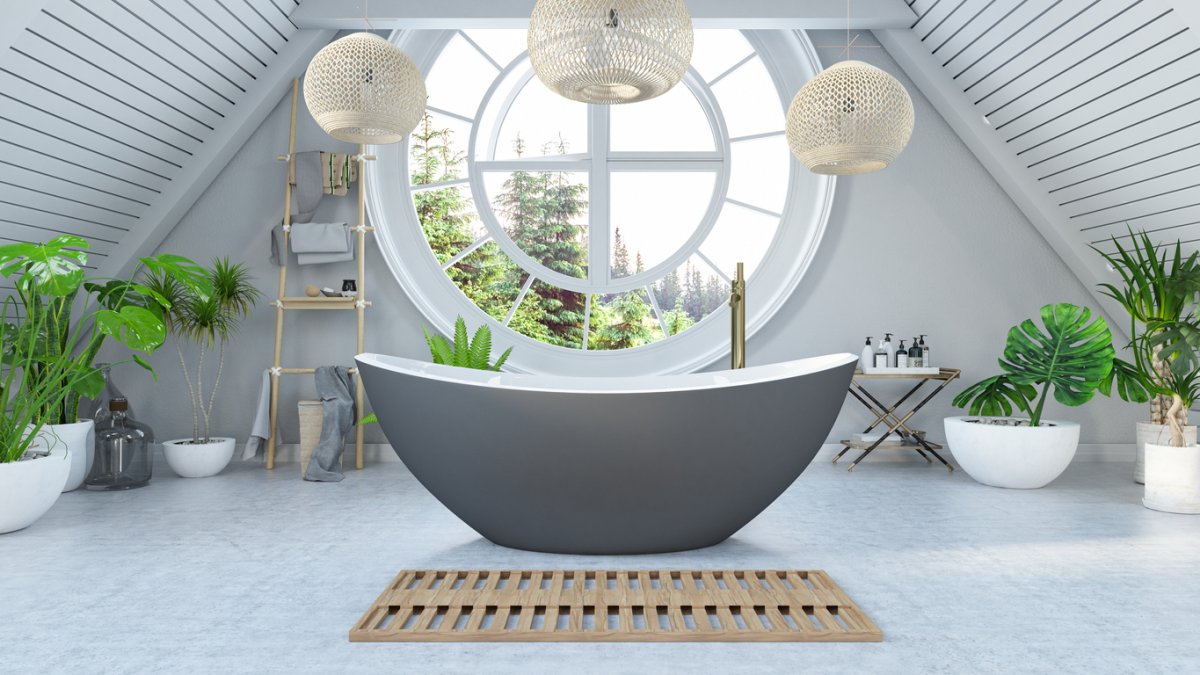

We may earn revenue from the products available on this page and participate in affiliate programs. Learn More ›
There are shower people, and then there are bath people. While these two groups may be able to debate the advantages and disadvantages of having a bathtub in a home from sunrise to sunset, not every home needs a bathtub and some can’t do without.
Even though a bathtub may simply be nice to have, there may be other reasons to include or exclude a bathtub if you are thinking about future resale value and your investment. With luxury showers growing in popularity, homeowners’ needs for tubs are changing.
We reached out to Rachel Moussa from Blushwood Realty Group in Texas to get her insights and opinions on the matter. Here are some considerations for deciding about bathtubs and showers in a home.
RELATED: 9 Types of Bathtubs Every Homeowner Should Know
This is the general rule of thumb with bathtubs.
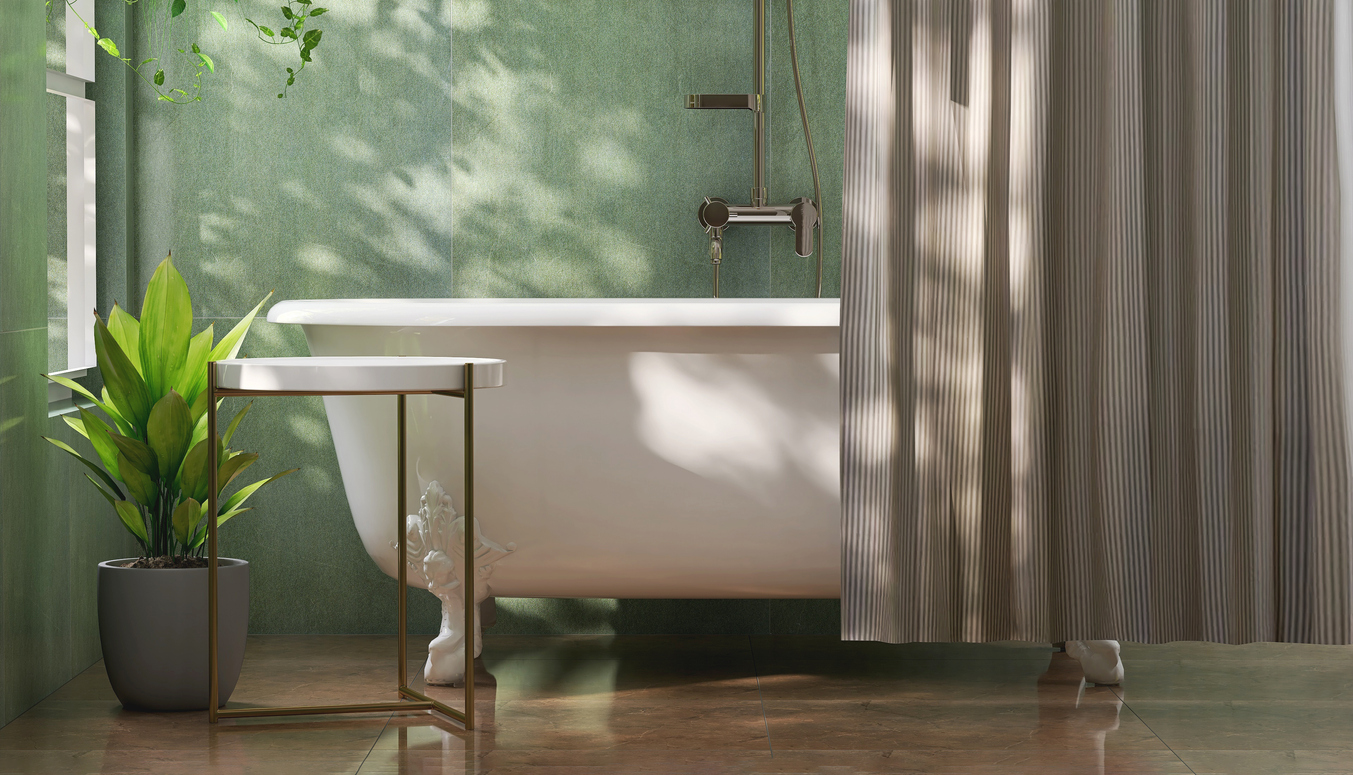
When Moussa first got into real estate, she was told there should be one bathtub on each floor that has a bedroom. If it’s a two-level home with bedrooms upstairs and downstairs, one tub is expected to be on the first floor and another on the second. In a two-level home with bedrooms upstairs only, there only needs to be a tub on the second floor.
It makes sense because if you are a bath person, the distance may be somewhat inconvenient—especially if you have to transport bath products, a book, something to drink, and all the other tidbits that make long baths enjoyable. However, Moussa says this rule no longer needs to be followed.
Pro: Bathtubs don’t have to be in the primary suite.
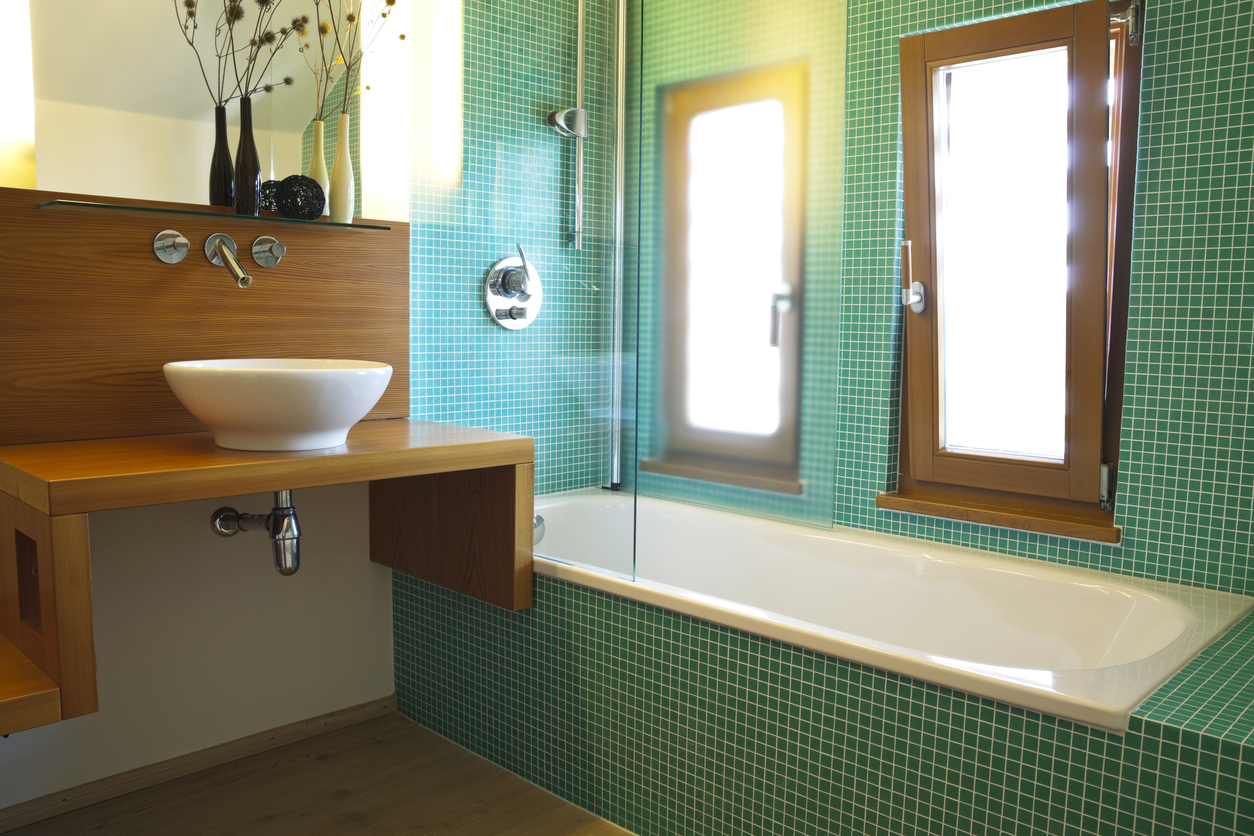
There’s a notion that the primary suite requires a tub in the ensuite bathroom, but that’s not necessarily true. Current homes have been bucking this trend. However, one bathtub on the same floor as the homeowner’s bedroom is a good idea, but it can be in the guest bath down the hall. Instead, the primary suite could have a vertical shower spa with built-in seating or another type of shower design that caters to the homeowner’s needs.
RELATED: Solved! What’s the Best Bathtub Size?
Con: Showers are more efficient.

From a time and water waste perspective, showers have the upper hand. The average shower in the U.S. lasts approximately 8 minutes and uses approximately 16 gallons of water. A bath is a more languid affair. Sometimes soaks can last more than a half an hour and use around 70 gallons of water—and this doesn’t even include the water you might use to rinse off after a bath. This means a shower could save you money on water bills.
Pro: Not having a bathtub can be a deal-breaker.
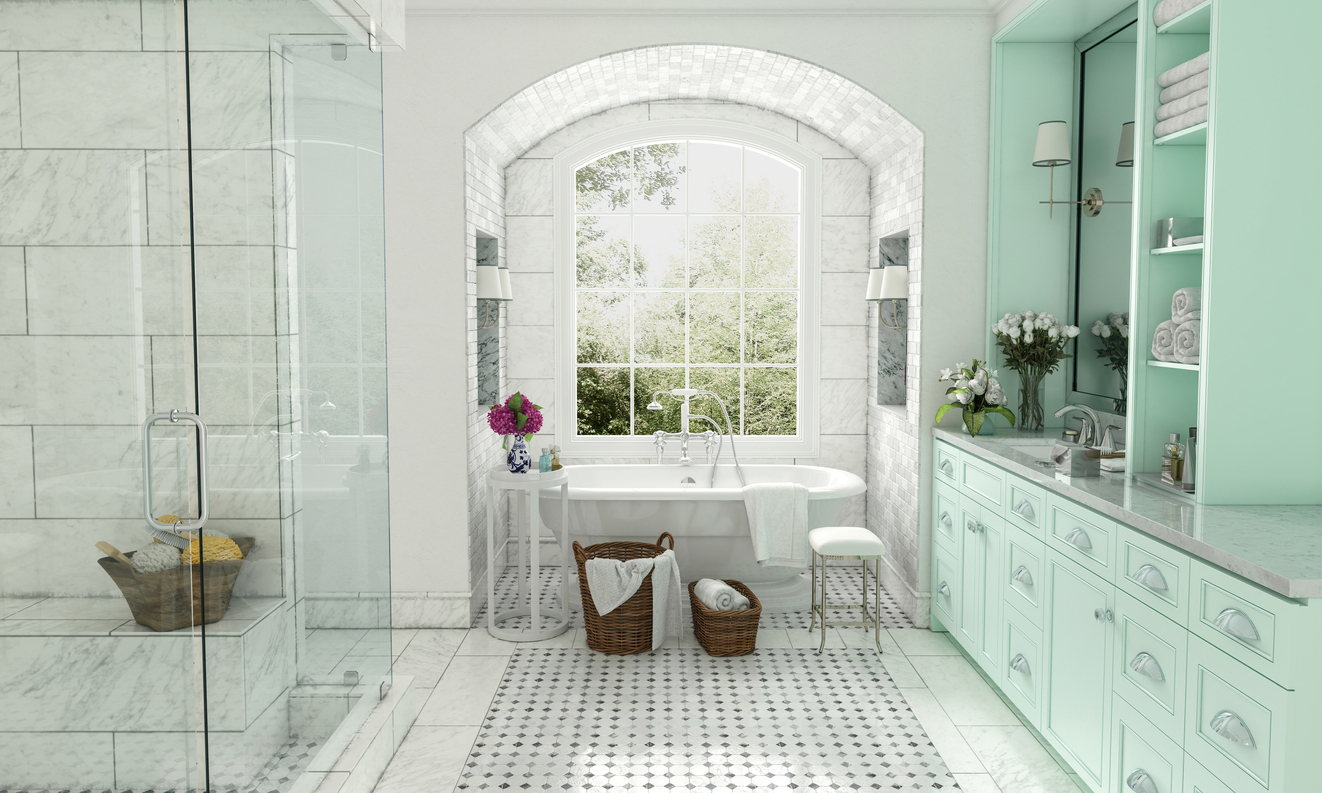
Shower people may not want a bathtub in their home at all and might even remove a primary suite bathtub in favor of a walk-in shower. If they stay in the home long-term, excluding a tub really isn’t much to worry about. However, if they plan to put their house up for sale soon, and their floor plan doesn’t include a tub, they’re eliminating a section of the buyer pool.
After hundreds of sales and experience in renovating and flipping houses, Moussa says there are people who will not buy a house without a bathtub. In contrast, having a bathtub in a home is highly unlikely to tank a real estate transaction. So erring on the side of at least one tub in the house could make a difference in your ability to sell your home.
RELATED: All You Need to Know About Walk-in Showers
Con: Jetted tubs can be full of bacteria.

Moussa points out that jetted tubs can be pretty gross if they’re not taken care of properly. The interior pipes of jetted tubs that are not filtered or cleaned with appropriate chemicals can develop bacteria and microbial growth. When the jets turn on, this bacteria shoots into the tub along with the water, which can result in health conditions, including urinary tract infections and skin irritations or infections.
RELATED: How Much Does Bathtub Refinishing Cost?
Pro: A tub is a logical choice for certain buyers.
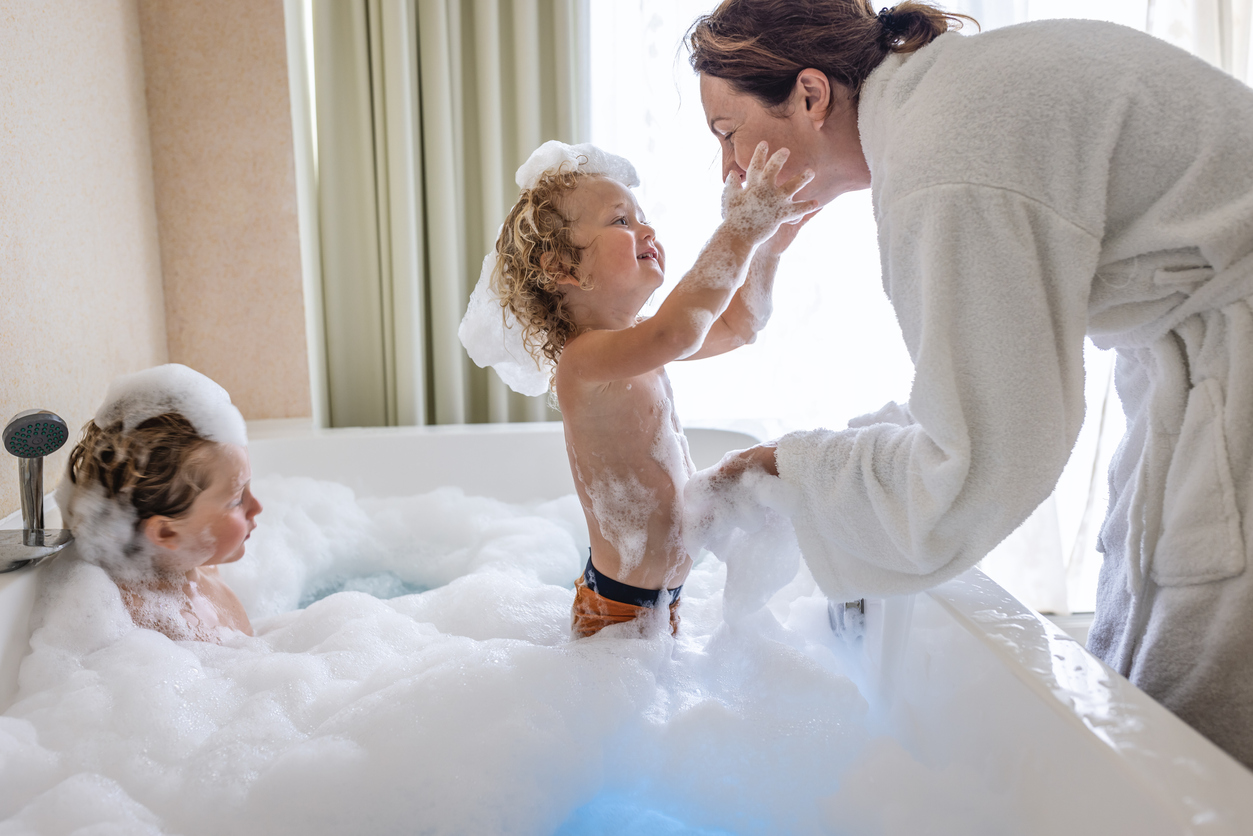
A bathtub is a must-have for a few types of people. Of course, there are those who like to relax in the bathtub, but some families absolutely need a tub. In particular, homes with young children or pets tend to use bathtubs more often. Washing little ones in the kitchen sink may work while they are really small, but bathing them in a tub is inevitable. Similarly, a tub is helpful for dogs or other pets who get dirty from playing outdoors. Washing them in a bathtub is often the easiest place to scrub them clean.
RELATED: The Best Tub-to-Shower Conversion Kits to Update the Bathroom
Con: Showers can be better for elderly people.
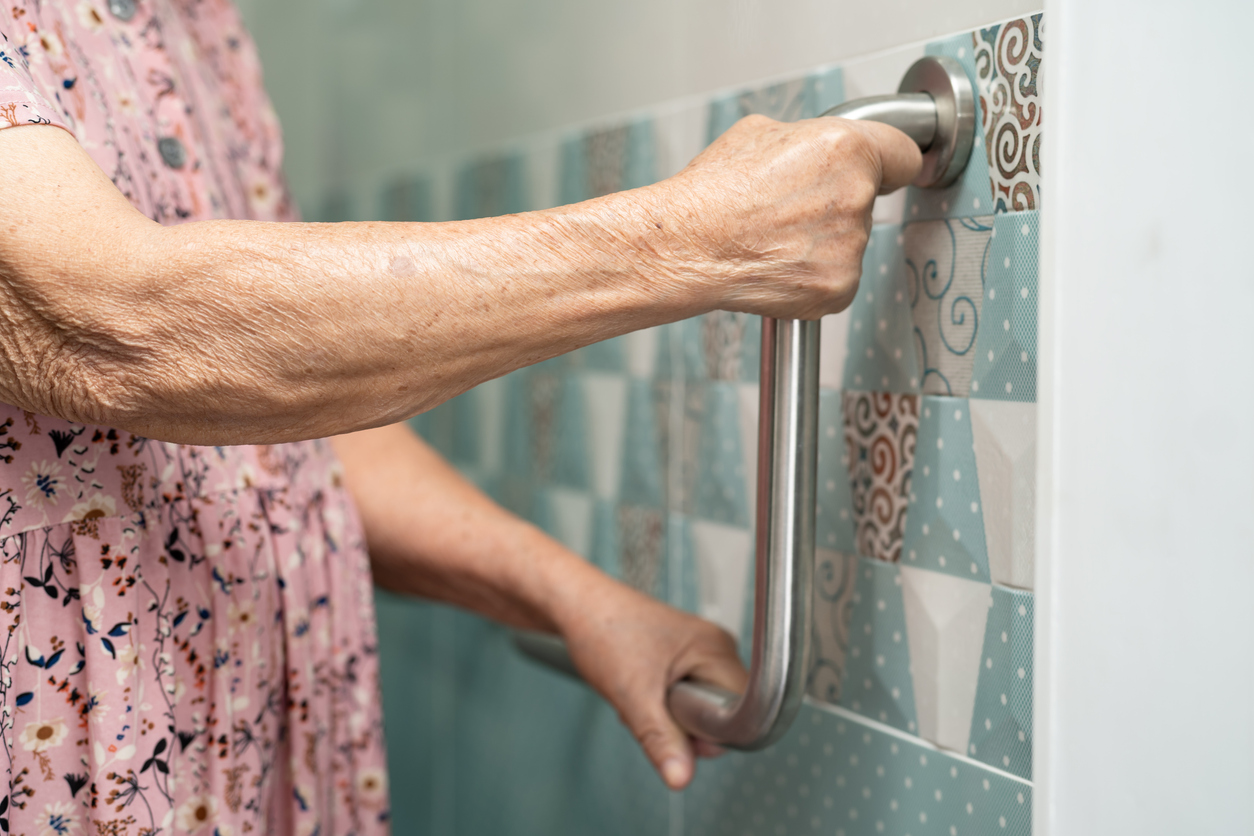
Curbless showers are having a moment right now. They make showers more accessible, eliminating the need to step over anything. And in general, showers are well-suited for seniors or those with mobility issues. They can more easily get into a shower than a standard tub, since they do not have to step over the lip of a tub.
However, as Moussa mentions, houses do shift a little over time, so a curbless shower built at the right angle now may create an opportunity for water to pool years down the road. A shower containing water with even a small curb can eliminate future stress. And accessible tubs are another option with a side door to the bathtub for easy entry.
Pro: A bathtub allows for a spa-like experience.
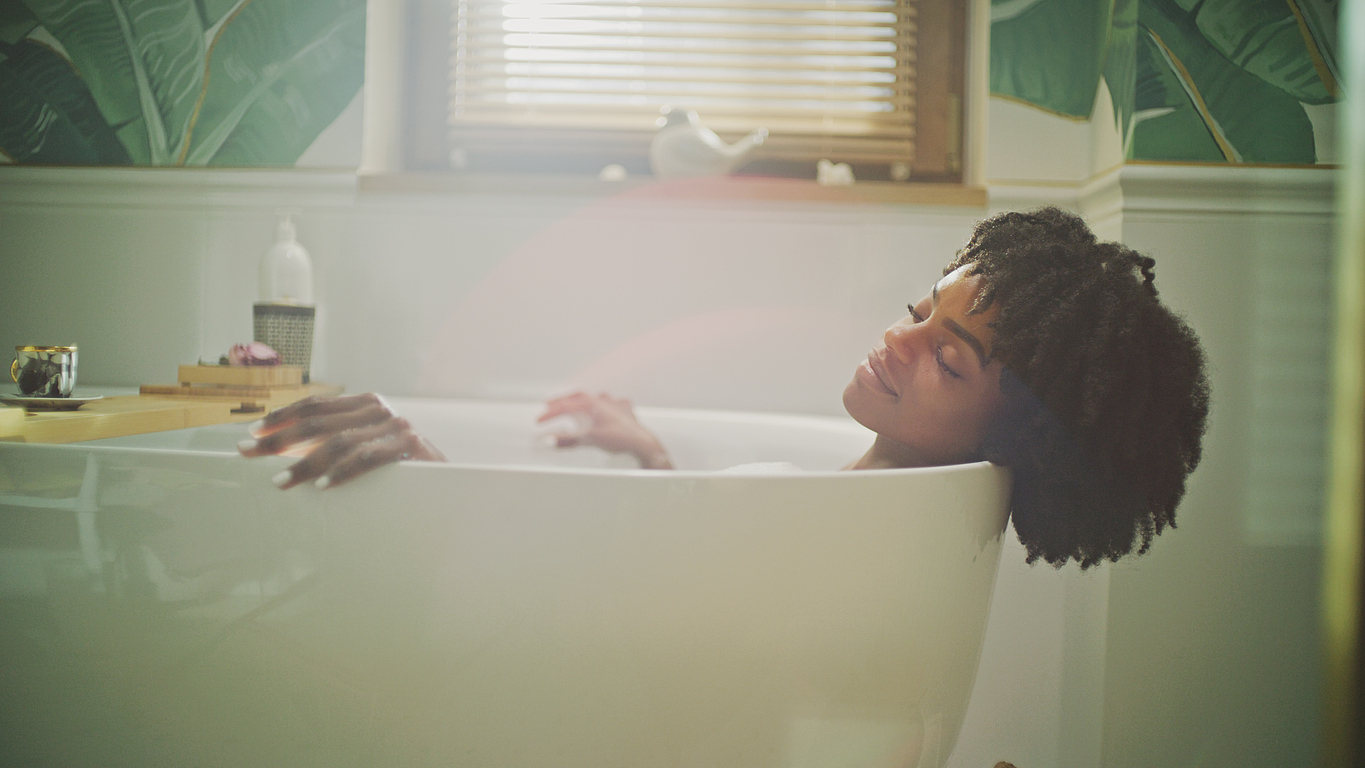
How often you plan to have a long, luxurious bath is another factor. If you don’t have a hot tub at your home, a hot bath is the next best thing. Creating a spa-like environment is a benefit many homeowners seek out when looking for a primary suite with a bathroom. A bathtub with a ledge around the top or near a source of natural light is another benefit that adds to the ambiance.
RELATED: How Much Does a Walk-In Tub Cost?
Con: Modern showers also offer luxury.
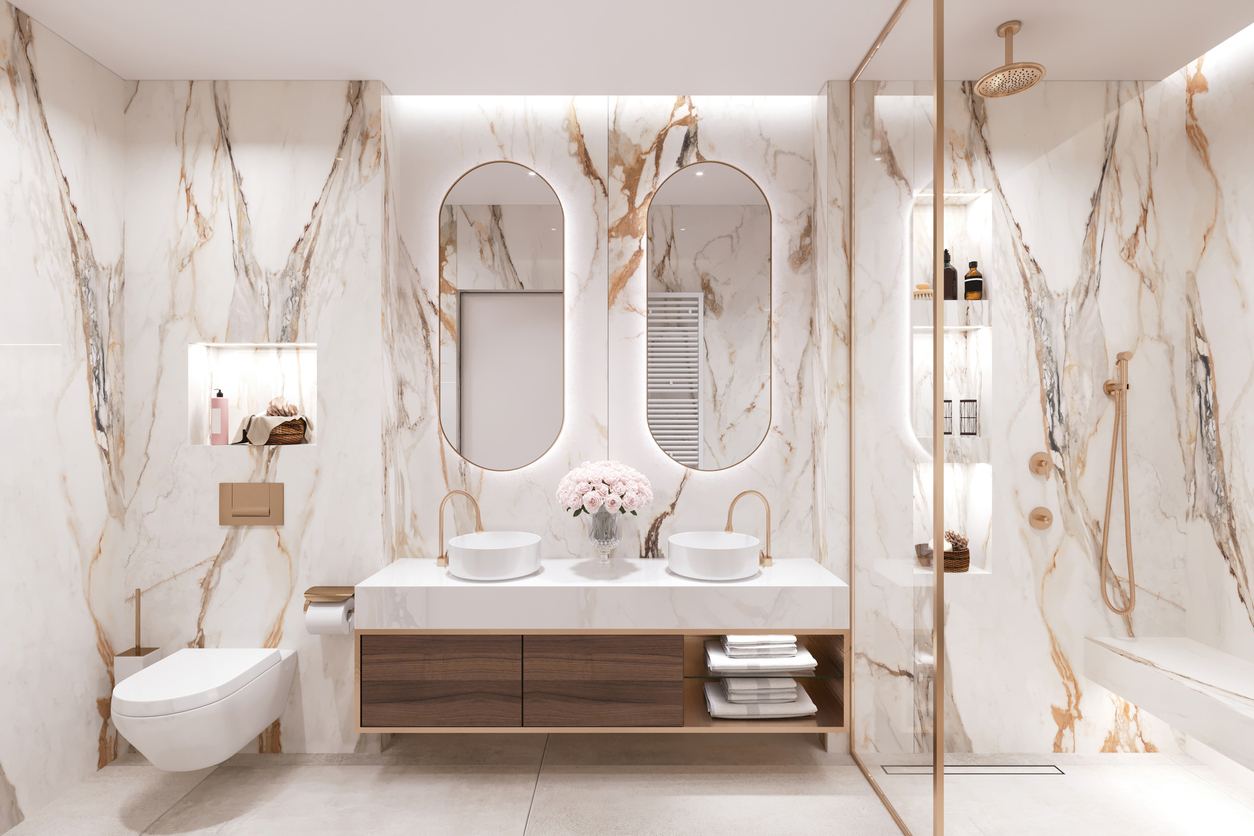
Many adults like baths because of the luxury associated with them, but Moussa points out that modern showers can be extravagant too. Large showers with frameless glass elevate the aesthetic of a bathroom. These showers often have multiple shower heads and settings, built-in seating, and plenty of space to shower without feeling cramped. The steam keeps you warm, and you get a constant water supply at your preferred temperature—unlike a tub where the water gets gradually cooler.
RELATED: 21 Ways to Create a Spa Bath at Home
